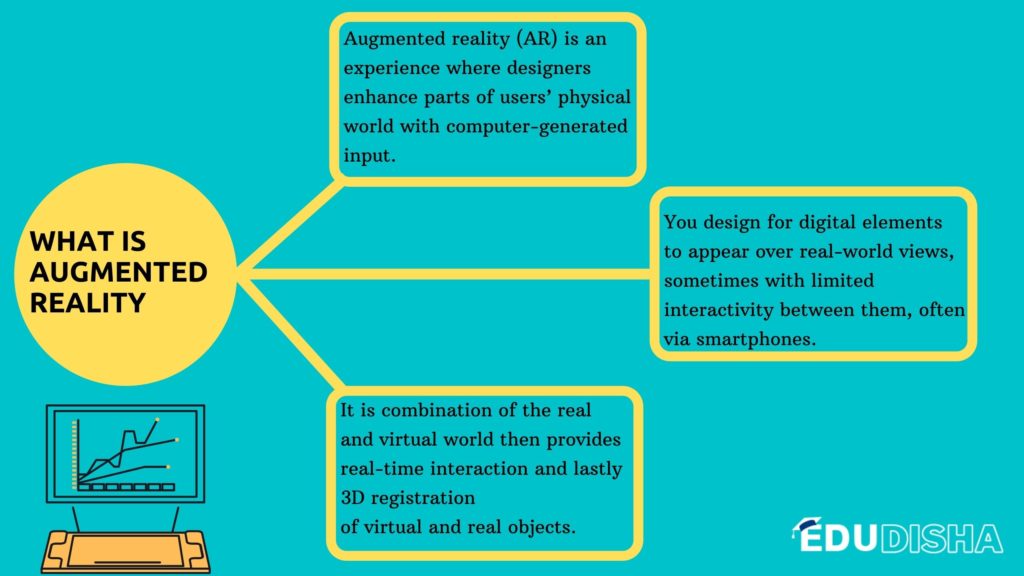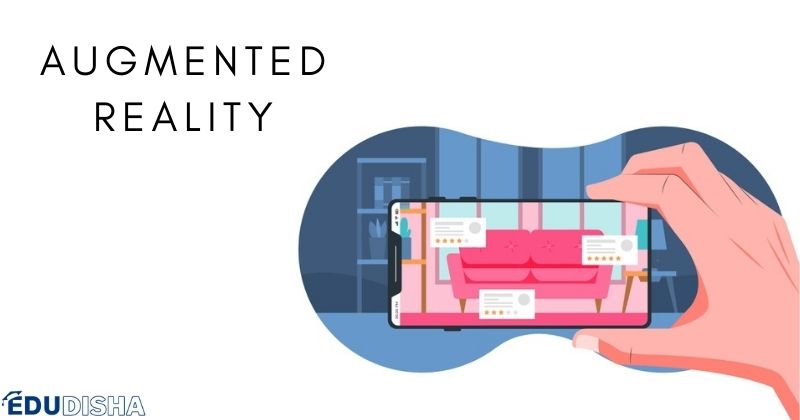Technology and digitalization have taken an upper hand in every sector, department, and wholly for the globe itself. Now, things are nearly impossible without technology. Right from the invention of television, mobile phones to this date of virtual reality.
Developments and innovations are taking place at a rapid rate. This is exactly how the globe is shifting to a completely new phase. One modern-day invention is Augmented reality.
What is Augmented reality?
Augmented reality is an evolved version of experiencing the real-physical world with the help of numerous digital elements and devices. The elements including the sound and other sensory stimuli give the user a hands-on experience. It involves three basic features. Firstly, a combination of the real and virtual world then provides real-time interaction and lastly 3D registration of virtual and real objects.
Augmented reality is also known as mixed reality and computer-mediated reality. AR helps people from different sectors.
From urban designing to industrial manufacturing, there are hell lot of potential benefits of AR. So, today we will discuss how it has helped multiple industries, also will try drawing a line of comparison between AR and virtual reality.

Read Also: Sound Engineering: Meaning & Career Opportunities
Difference between AR and VR
Frankly, there are a lot of differences between these two inventions. From the devices they require and the experiences they offer. To start, one of the main differences is that AR uses a real-life fixture whereas Virtual Reality (VR) is completely virtual. Here’s listing other 3 major points:
- The users of AR can control their presence in the real world, whereas the users of VR are controlled by the system itself.
- Then, moving on AR can be accessed on the mobile phone itself, whereas VR requires a complete headset device.
- And lastly, AR amplifies both the real and virtual worlds, but on the other hand, VR enhances the virtual world only, as its name suggests.

Potential advantages to various industries
- Urban designs and planning: It states that augmented reality systems are used as a collaborative tool in designing the built environment. It helps in building reality maps and buildings. Adding to this, the outdoor AR emphasizes that the designs and plans can be imposed in the real world itself.
- STEM education: Augmented reality has improved the education system a lot. Google Glass is one such example that replaced the physical world. Videos, sound effects, graphics all provide a real-time experience to both the students as well as educators. Flashcards and other textbooks can even contain the embedded “markers” which when scanned by an AR device can provide more information.
- Industrial manufacturing: Augmented reality has been a substitute for paper. Through AR, it has reduced the employee’s workload and mental efforts. With easy and convenient digital instructions, overlaid manufacture’s onsite. It has even made machine maintenance more efficient. It helps the individual to adapt to rapidly changing digital designs and make changes accordingly.
Read Also: B. Tech in Food Technology: Meaning, Syllabus & Job Opportunities
Conclusion
Therefore to conclude, augmented reality has been a far better approach than compared to virtual reality. The scope is immensely wide as compared to the scope of VR. And in few years, it will take up the entire market.
